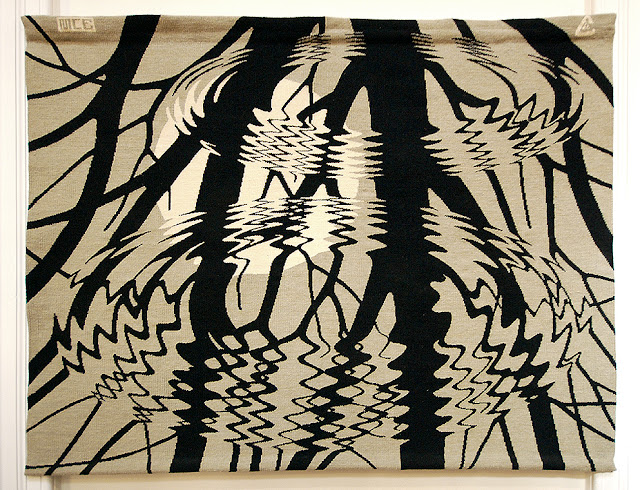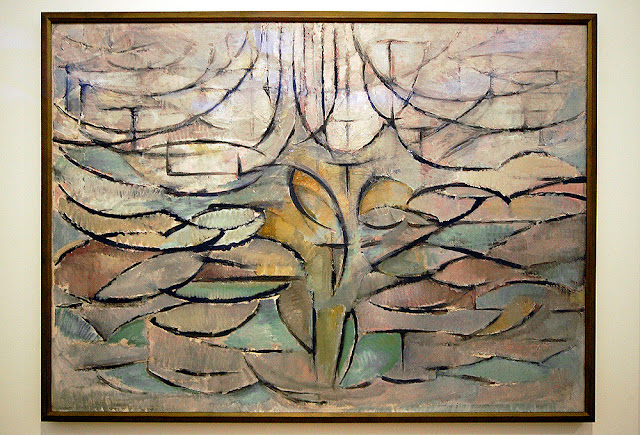For a wet Sunday afternoon activity, we visited a
most unusual art gallery. The BCEE bank here in Luxembourg has linked several
of its buildings on the Bourbon plateau by extending part of the pre-existing
underground casemates of the ancient city fortress. As a public gallery, the "Am Tunnel" hosts mainly works by local artists. It also houses a permanent collection of
the Luxembourg born, American photographer, Edward Steichen (1879-1973). The
works of Steichen were brilliant, the rest, a little less so.
Sunday 28 April 2013
Friday 5 April 2013
The Hague
We spent a couple of days in The Hague together with
Craig, Sophie and Elliot in what was best described as a “contained” apartment.
Retiring to bed and morning bathroom rituals became, by necessity, precisely
choreographed. As an added challenge, the apartment was accessed by a wonderfully
geometric, vertiginous staircase.
The architecture of The Hague appears quite
dissimilar to that of Amsterdam. It is much more like Brussels with many
examples of Art Nouveau and Deco styles including a marvellous glazed ceiling
shopping galerie.
One of the reasons for our visit to The Hague was to
see the apparently amazing tulip display at the Keukenhof Gardens. Due to
winter’s reticence in moving along, there were no tulips. Holland. Springtime. No
tulips? The closest we came to a tulip
was this remarkable ceiling in a department store on the Grotenmarkt.
As with many other European capital
cities, The Hague has its own controversial Richard Meier designed building. I
have always admired his minimalist, ultra-clean white style and this was not
disappointing. The city hall and library complex was also immense. The locals
have nicknamed it “The Ice Palace”.
The Hague having been the haunt of the other Ingrid
for a number of years, we were given a treasure hunt list of must-visit places
throughout the city. As some of you might imagine, it seemed to include a lot
of very impressive and uncheap shops and restaurants.
The Hague landscape is wonderfully punctuated by
canals (of course), extensive parks and myriad squares. Whilst most of the
latter are paved, some like the irregular shaped Lange Voorhout are
delightfully tree-lined and still impressive in their wintry nakedness.
On the last afternoon, Craig and I took a wander
around the port of Scheveningen which I recalled from a Half Ton Cup held there
in 1979. On the yacht club pontoons we saw the usual suspects, but the most
elegant “yacht” was the “Estrella”, a converted workboat now apparently used
for charter and parties.
Thursday 4 April 2013
Escher and Mondrian
The Hague has a number of world renowned art galleries
and museums. The Royal Picture Gallery Mauritshuis, home to many works by
Vermeer, Rembrandt, Hals, Holbein, et al, was closed for renovation.
Fortunately, the magnificent Escher Museum in the former Royal Winter Palace
was open. Ingrid has always been a great fan of his work because of its
mathematical connections, so this was a must-do on our itinerary. One is able to
see his entire oeuvre and witness the development of his style from the
original simple woodcuts to his mesmerising optical illusions and
“Metamorphose” series. We highly recommend a visit.
Ingrid’s favourite was “Reptiles”, as she did a
university paper on the mathematics involved in this. My favourite was a carpet
woven in the image of the lithograph “Rimpeling”.
There was an interesting additional exhibition of
“Seeing the world through Escher’s eyes” with some classic optical illusions.
As well, there was a room of optical art. As often happens, the exhibits were
either pretentious or spectacular.
Battling
the unhelpful public transport system of The Hague, we then visited the
Gemeentemuseum. It was built in 1931-35 to the design of popular Dutch architect
H P Berlage in the modern style of that era. Whilst the exterior is linear and
solid, the interior is pretty funky. It houses a very impressive, temporary
exhibition of the old masters’ paintings from the Mauritshuis – no photos
allowed, unfortunately. Vermeer’s “The Girl with the Pearl Earring” was apparently
on holidays in Japan.
In its De Stijl Art Movement section, the Gemeentemuseum houses the
world’s most complete collection of Piet Mondrian’s works. As well as the iconic minimalist geometric
works, there were many examples of his earlier styles including my favourite
cubist style “The Flowering Apple Tree”.
The museum featured many of the “Neo-Plasticism”
works for which Mondrian is best known, including his last painting “Victory
Boogie-Woogie”. My favourite is the “Composition with Lines and Colour: III” below. In
fact, I am toying with the idea of creating an homage to this for our living
room.
As we have often found, the rest of the
exhibits were, let’s say, not to our taste. It is always a mistake to read the
accompanying descriptive texts – hyperbole is a polite description. Ingrid was
particularly affected by a large installation of apparently scrap plastic
hanging from the ceiling. Fortunately, the decoration of the building itself
went some way to compensate.
Subscribe to:
Posts (Atom)





















